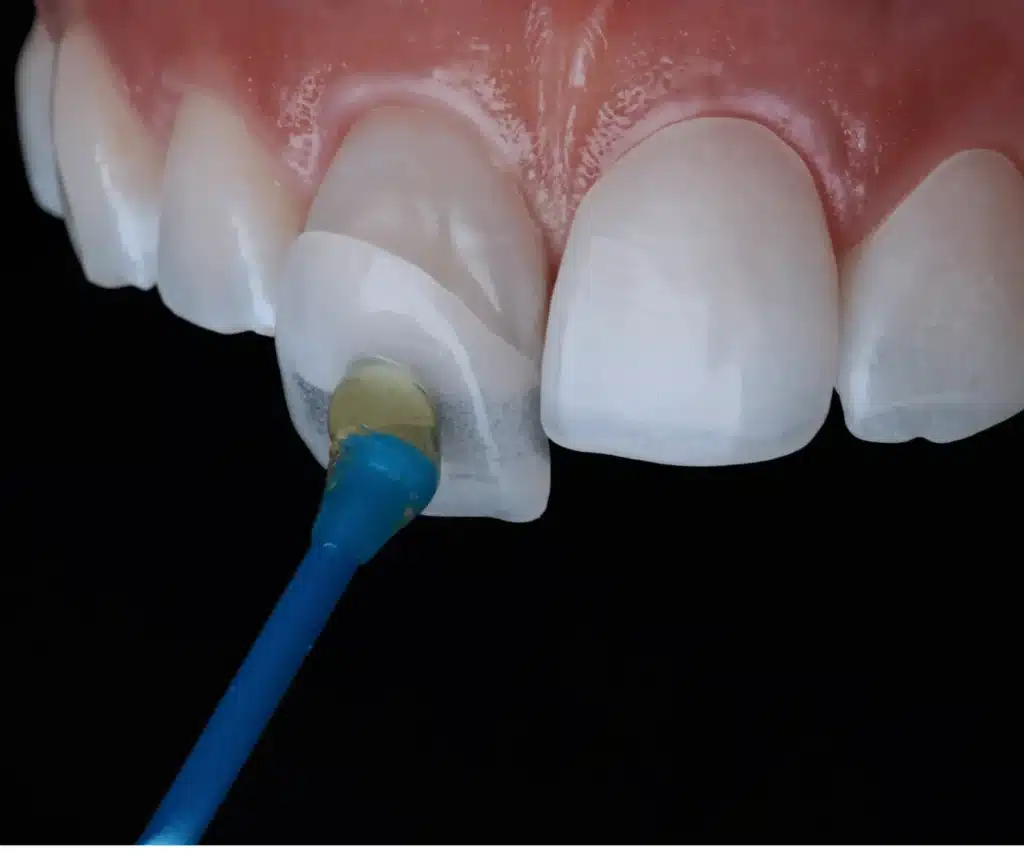Common Problems with Dental Veneers and How to Avoid Them
Introduction
Dental veneers are a popular solution for enhancing smiles, offering a natural-looking way to correct issues such as discoloration, chips, or minor misalignment. However, like any dental procedure, veneers come with their share of potential complications and risks. While most patients experience excellent results, it’s important to understand what problems can arise—and how to prevent them.
This article will explore the most common issues associated with dental veneers, from sensitivity and detachment to discoloration and fit problems. More importantly, we’ll explain how to avoid these pitfalls, ensuring a smooth, long-lasting outcome.

Veneer Sensitivity
One of the most frequently reported problems after getting veneers is increased tooth sensitivity. This is typically due to the removal of a thin layer of enamel during the preparation process, which can expose the underlying dentin.
Causes
- Aggressive enamel removal
- Poor bonding technique
- Gum recession exposing the edges
Prevention and Solutions
- Work with an experienced dentist who uses a conservative preparation approach
- Use desensitizing toothpaste post-treatment
- Avoid extremely hot or cold foods in the first few weeks
- Maintain proper oral hygiene to prevent gum issues
Sensitivity usually subsides within a few weeks. If it persists, it could be a sign of underlying issues such as poor bonding or exposed nerves.
Veneer Detachment or Falling Off
Although uncommon when done properly, veneers can occasionally fall off or become loose. This can happen shortly after placement or years later.
Causes
- Weak bonding material or technique
- Insufficient tooth structure for secure bonding
- Excessive pressure from teeth grinding or trauma
Prevention and Solutions
- Ensure your dentist uses high-quality bonding agents
- Address bruxism (teeth grinding) with a custom night guard
- Avoid biting hard objects like ice, pens, or fingernails
- Have regular checkups to ensure proper adhesion
If a veneer comes off, it’s important to save it and contact your dentist immediately. Re-bonding is often possible if the underlying tooth is healthy.
Improper Fit or Appearance
A poorly fitted veneer can lead to discomfort, functional issues, and an unnatural look. Ill-fitting veneers may feel bulky, uneven, or protrude beyond the gum line.
Causes
- Inaccurate impressions
- Lack of customization or attention to detail
- Use of prefabricated or low-quality veneers
Prevention and Solutions
- Choose a dental provider with a proven track record and access to advanced imaging tools
- Ask to preview temporary veneers to check the look and fit before the final placement
- Communicate clearly about your expectations regarding shape, size, and color
When veneers are expertly crafted and placed, they should feel completely natural and blend seamlessly with your existing teeth.
Discoloration and Staining
Porcelain veneers are highly stain-resistant, but composite veneers and the natural teeth around them are more vulnerable to discoloration. Additionally, the bonding cement used can discolor over time, especially at the edges.
Causes
- Consuming dark-colored foods and beverages
- Smoking or tobacco use
- Poor oral hygiene
Prevention and Solutions
- Avoid or limit coffee, red wine, and similar staining agents
- Quit smoking
- Maintain regular dental cleanings
- Use non-abrasive whitening toothpaste
If staining occurs along the veneer margins, professional polishing or replacement may be needed, depending on the severity.
Gum Irritation and Inflammation
Poorly placed veneers can irritate the surrounding gum tissue, leading to redness, swelling, or even infection. Improper margins that extend too far beneath the gum line can trap bacteria and food particles.
Causes
- Over-contoured veneers
- Inadequate cement cleanup during bonding
- Poor oral hygiene post-placement
Prevention and Solutions
- Ensure veneers are precisely contoured for a proper fit
- Maintain meticulous brushing and flossing habits
- Use an antibacterial mouthwash as recommended
If gum inflammation persists, consult your dentist promptly. In some cases, minor reshaping or veneer replacement may be necessary.
Veneers Feeling “Off” or Uncomfortable
It’s not unusual for veneers to feel strange immediately after placement, but this sensation should fade within a few days. Persistent discomfort, clicking, or bite issues may indicate a problem.
Causes
- Inaccurate bite alignment
- Improper bonding
- Underlying dental issues such as decay or infection
Prevention and Solutions
- Request a thorough bite analysis during the fitting process
- Report any discomfort or bite changes immediately
- Allow time for minor adjustments during follow-up visits
A well-placed veneer should feel no different from a natural tooth.
Damage from Teeth Grinding
Bruxism, or involuntary teeth grinding—especially during sleep—can shorten the life of your veneers and cause chips, cracks, or premature detachment.
Prevention and Solutions
- Wear a custom night guard if grinding is an issue
- Reduce stress, which can contribute to bruxism
- Avoid stimulants like caffeine or alcohol before bedtime
Porcelain is strong but not immune to pressure damage. Protective habits are crucial for longevity.
Decay Around or Under Veneers
While veneers cover the front of your teeth, decay can still form around the edges or underneath, especially if hygiene is neglected.
Causes
- Poor oral hygiene
- Incomplete sealing during veneer bonding
- Pre-existing dental issues not treated prior to veneer application
Prevention and Solutions
- Maintain a consistent brushing and flossing routine
- Get regular checkups to detect early signs of decay
- Make sure underlying issues are treated before veneers are applied
If decay compromises the tooth, the veneer will likely need to be removed and replaced after treatment.
Veneers Looking Fake or Too White
The goal of veneers is a natural enhancement—not a glaringly artificial smile. Overly bright or uniform veneers can look fake, especially if they don’t match the surrounding teeth or facial features.
Causes
- Choosing the wrong shade or shape
- Lack of translucency in the veneer material
- Poor communication with the dentist
Prevention and Solutions
- Select a shade that complements your natural teeth and skin tone
- Ask for a smile preview or digital rendering before placement
- Work with a dentist who prioritizes facial harmony in cosmetic design
Customization is key to achieving a realistic, flattering smile.
Conclusion
Dental veneers can deliver a stunning, long-lasting smile transformation, but it’s essential to be aware of potential challenges. Many common problems are easily avoided through proper planning, choosing a qualified dentist, and committing to good oral hygiene habits.
At F Dental Center, we take pride in offering precise, personalized veneer treatments backed by advanced technology and patient-focused care. Our goal is to ensure that your veneers not only look amazing but also feel comfortable and last for many years to come.
If you’re considering veneers—or experiencing any issues with your current ones—schedule a consultation with our expert team today. We’re here to help you smile with confidence.
